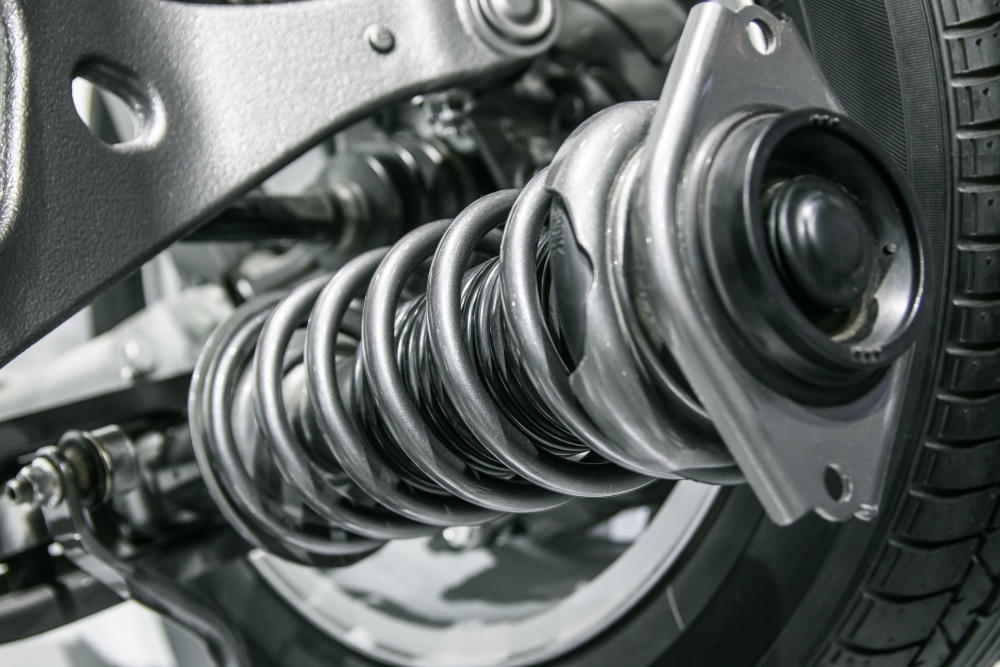Springs are everywhere. They are used in a variety of industries, from engineering and automotive to aerospace and retail, and the different types of springs that can be manufactured are almost as diverse as their uses – the same is true of the materials that springs are made of.

Both the type of spring and the materials chosen will depend on the project you are working on and the applications of the product; no matter what you’re working on, it’s important to choose the material that offers the properties your project demands.
How do you decide which spring materials are right for your project? Below, we’re taking a look at different metals and their properties, as well as which applications they are best suited for.
What Determines the Best Material for a Spring?
As spring manufacturers, we’re aware of just how complex spring design and spring manufacturing are; before creating your spring, we need to know precisely what it will be used for, since this will help us to create the product to your exact specifications. This means we need to be aware of factors that may impact how the springs will perform, such as temperature and corrosion.
For instance, if the spring will need to perform optimally even at incredibly high temperatures, then this will help to determine the materials we’ll choose – Inconel alloys, which have a chromium-nickel base, are great for extreme environments, since it still retains its strength even when temperatures exceed 800oC. If you work in the oil and gas industry and require springs that can withstand corrosion from saltwater, for example, then stainless steel can be a fantastic choice, as this material won’t rust or weaken even in environments brimming with moisture.
The lifespan of the spring will also play a key role. Springs that are expected to be used thousands or millions of times over its life cycle needs to be able to withstand normal wear and tear. For instance, if a spring is part of an engine in a car, then it will be in use fairly often, which means it needs to be hard-wearing and durable.
Having the right spring material, therefore, is crucial to the manufacture of a product that will meet the demanding requirements of your project and of the industry, and that will stand the test of time.
So, which metals are commonly used in springs and why?
Different Metals for Different Springs
Stainless Steel
Commonly used for springs, this material is ideal for settings where higher corrosion or heat resistance is a necessity. This steel alloy has a minimum of 10.5% chromium content and a maximum of 1.2% carbon content. Stainless steel comes in several different grades, each with its own properties, as well as types: austenitic, martensitic and precipitation hardening.
Austenitic stainless steels are hardened by cold work and are useful for applications where resistance to corrosion is required; martensitic stainless steels also have good resistance to corrosion and are strongly magnetic, although they have poor electrical conductivity; and precipitation hardening stainless steels have high tensile strength and great resistance to fatigue, though they can crack due to stress.
This is a very popular and versatile alloy for springs and used in a variety of markets and sectors, including architecture, art, aerospace, chemical processing, food and transportation.

High Carbon Steels
This is also an extremely popular alloy used in the manufacture of springs. Carbon steels have a carbon content of up to 2.1%; the higher this percentage, the stronger the alloy will be. The properties of this material make it sought-after for springs, as it can offer great hardness levels and resistance to wear and tear. Hard drawn wires for low-stress applications come at a low cost, while higher tensile materials are best suited for high-stress applications and are more expensive.
High carbon steels are less ductile and more brittle than metals like steel, which means they won’t be suitable for environments where flexibility is a concern.
Nickel Alloys
Nickel is a versatile material that will alloy with many different metals, making it perfect for a range of environments where resistance to corrosion and high temperatures is a requirement. Nickel alloys also tend to offer a high level of strength and durability and remain reliable even in the most demanding of environments, like chemical plants or oil rigs. Nickel-based alloys are also commonly found in places where below-zero temperature applications are needed, and their nonmagnetic properties allow them to be used in indicating instruments and gyroscopes.
Cobalt-nickel alloys are often chosen when stainless steel is not enough. These alloys have high strength, are durable, have a great degree of ductility and outstanding resistance to corrosion and wear and tear.
At Airedale Springs, we are an industry leader in custom spring design; our team has many years of experience, as well as the knowledge to create high-quality springs at very competitive prices at all times. We’re committed to excellent service, so get in touch with us to learn more about how we can help your next project.

